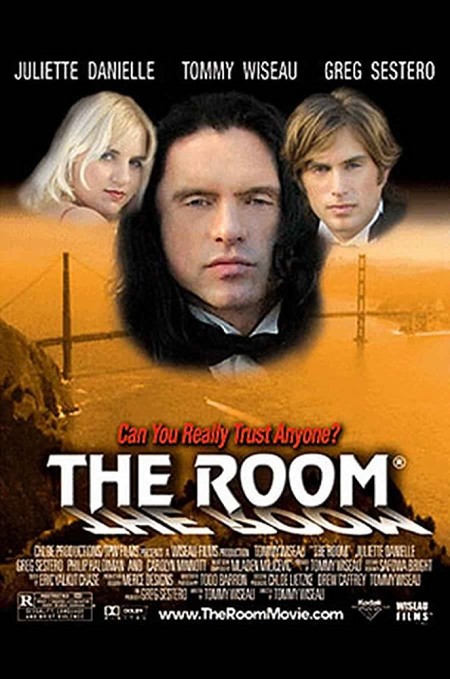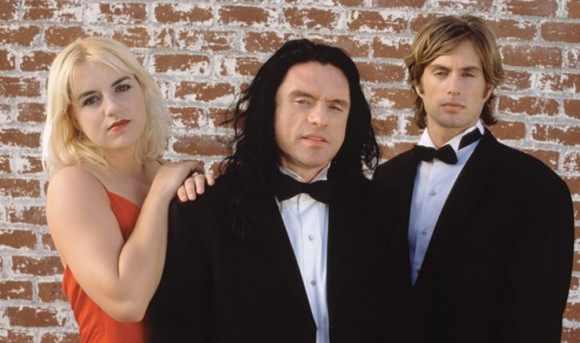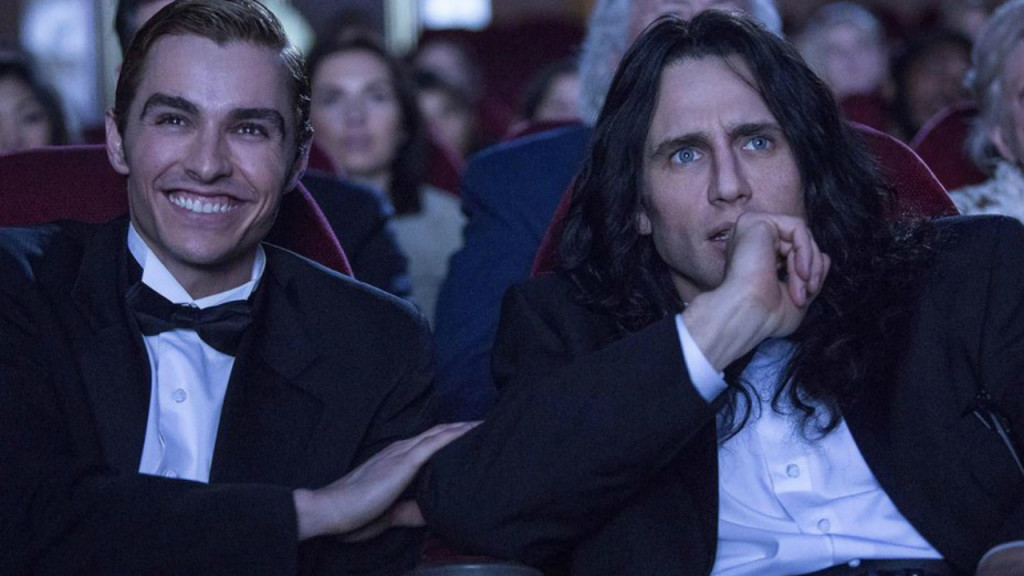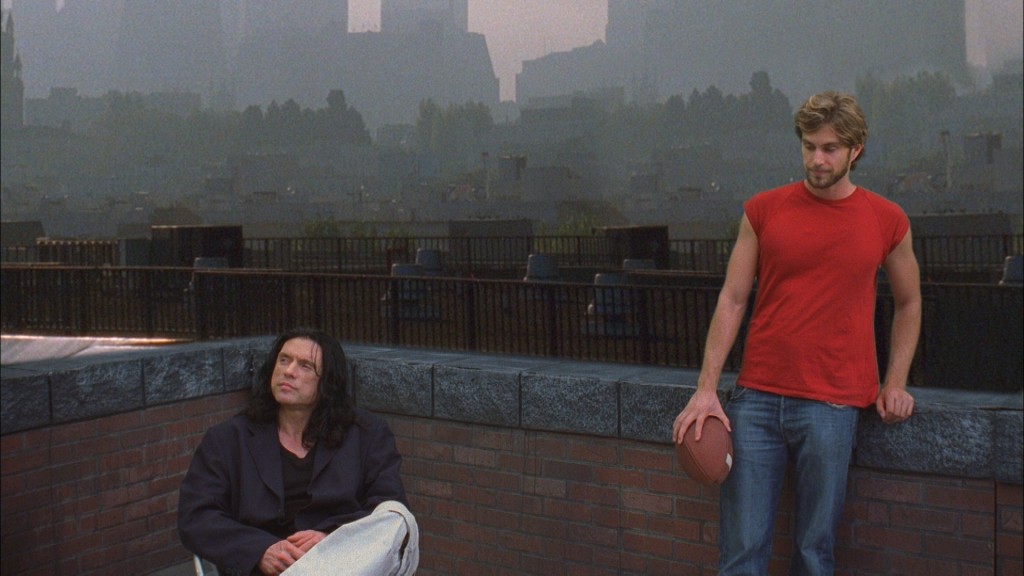Genre: Dramedy
Premise: Based on the true story. The Disaster Artist chronicles the making of the worst movie of all time… The Room.
About: Been looking forward to this one for a long time! Franco’s getting the best reviews of his career (95% on Rotten Tomatoes). Franco directed and acted in the film, along with his brother, Dave Franco, his buddy Seth Rogen, Alison Brie, and Josh Hutcherson.
Writers: Scott Neustadter & Michael H. Weber (based on the book The Disaster Artist by Greg Sestero and Tom Bissell)
Details: 105 minutes
Hollywood’s got it all wrong.
They’ve concocted this ludicrously complex formula for making money, which includes coming up with a film idea that can be expanded into multiple product lines such as toys, music, and theme parks, when all along it was Tommy Wiseau who had the real vision.
Here’s his formula. Take note:
Overpay to make a movie so bad, barely anyone shows up for it, but just enough people to tell other people that it was the worst movie ever, which in turn drives their curiosity and gets them into the theater, who in turn bring their friends to show them how bad the movie is, a process that gradually builds and turns the film into a cult classic.
After six years of this, have one of the stars of the film, and the director’s supposed best friend, write a book that throws the filmmaker under the bus to such a degree and in such entertaining fashion, that the book itself becomes a best seller. Then wait for a Hollywood star to read said book, fall in love with it, buy the rights, then make a movie about the book about the making of the movie, finally bringing the story of the film to the masses, who now have no choice but to go rent the original film that this film was based on, turning said terrible film into a financial success.
That, my friends, is how you do it.
The Disaster Artist (here’s my old review of the book) is one of the most complex pieces of entertainment I’ve ever encountered. There are so many stories within stories here, so much inside baseball, all packed onto a story whose structural oddities make it a screenwriting nightmare, that there’s virtually no way to make it work. A recent test screening showed that the average audience member didn’t even know this was based on a real story. They just thought it was another wacky James Franco Seth Rogen comedy.
The Room was a movie made by an eccentric weirdo named Tommy Wiseau, a secretive wannabe actor who believed people would buy him as the next great American movie star. He befriended a shy 19 year old actor, Greg Sistero, who had Brad Pitt looks but Rob Schneider talent. The movie they made was so bad, it became a cult hit that many dubbed “the worst movie ever made.” This film is about the friendship between Greg and Tommy while making that movie.
Let’s be clear here. Franco deserves all the acclaim for this film. He wears all the hats. But screenwriters Scott Neustadter and Michael Weber aren’t far behind. They did some amazing things with this. Give Franco credit. He could’ve hired some Rogen-Franco inner-circle assistants to write this film. But they spent the money to get it right.
How tricky was the script?
For starters, it takes place over a number of years. Movies work best with tight time frames (2 weeks or less is ideal). The main exception to this rule is period pieces (by that I mean hundreds of years ago, not the 90s). The reason long time-frames are bad is because it’s harder to sustain tension in a story if you’re always stopping and starting. An 8 month time jump is a momentum killer. I’m not saying it can’t be done. But trust me, it’s a huge challenge to make jumps like that seamless. And these guys did it.
Then there’s the movie-within-the-movie aspect, always a challenge to pull off because you’re figuring out how to divide time between the “real life” stuff and the making of the movie. Also, movies about Hollywood are always terrible. So you’re diving into those shark-infested waters.
The biggest challenge, however, is the tone. I can only imagine what the meetings were like discussing this. People who love The Room are coming into this film hoping for a lot of that goofy “so bad it’s good” comedy. However, The Disaster Artist can’t be that movie. It’s not The Room. So how do you appease those expectations? On the other side you have people who’ve never seen The Room. They’ll make up the majority of the audience. What movie are you giving them? Because it has to be a different movie than the one you’re giving Room lovers.
How did Neustadter and Weber solve this problem?
The answer is why these guys are making 7 figures a job and you’re not.
They anchored everything in the friendship between Tommy and Greg.
Here’s why that matters. This movie can’t possibly appease everyone. But the thing that EVERY audience member relates to is friendship. The struggles and complications of friendship are universal. This is why I tell you guys that while the plot is important, you gotta get the relationships right. That’s what’s going to hold your story together.
But this was one of the most complicated friendships I’ve ever seen. You have Tommy, who’s so socially unaware that he clings to anyone who gives him even a modicum of attention. And you have Greg, who you always get the impression doesn’t respect Tommy. I mean in real life the guy wrote a book exposing Tommy as a giant idiot.
So how do you make us believe that these guys are actually friends? The whole movie depends on it so you have to make that believable.
This is where lesser writers would’ve crumbled. Neustadter and Weber knew that the way to do this was with an early scene, preferably the first or second scene between the characters. If we convincingly establish this friendship early, we’ll believe it for the rest of the film. That’s how screenwriting works.
And they write this really clever scene in an acting class where Greg struggles to emote. He struggles to leg go. That’s why he’s a bad actor. Tommy, on the other hand, doesn’t give a shit. He emotes from the top of the Empire State Building. Sure, it’s uncalibrated and awkward. But that freedom is what Greg’s missing.
So Greg asks Tommy to do a scene with him to see if he can tap into that freedom, and Tommy challenges him, as they’re eating dinner later, to do the scene right there, in front of the restaurant. Greg is terrified. But Tommy pushes him, and as Greg does the scene, we see him free up and finally, for the first time in his life, let go. It results in a euphoria he’s never felt before. And that’s it. After that scene, we know why Greg will follow this man to the moon and back.
The film does hit some of those LA side-street speed bumps though. Franco’s Tommy impression is laugh out loud funny for the first half-hour, but loses its luster later on. Once those laughs were gone, the movie lost a step. The second half of the film becomes a lot more serious than I expected and I’m not sure that was the right choice. I was hoping for more funny moments of them making the movie. But the infamous, “Oh, hi Mark” scene was pretty much all we got.
This is what I meant when I said that the tone is tricky. You want to keep the audience emotionally invested, but not at the expense of the comedy. And you want to keep them laughing, but not at the expense of emotional investment. If there’s one knock against this film, it might be that it never established a genre. When you don’t have a genre, then when you run into problems, you don’t have a roadmap for where to go. Like, if you’re a comedy and you’re getting towards the end and you’re wondering, “Should this scene be funny or dramatic?” Well, it’s a comedy so it should be funny. This film didn’t have that clear answer and you could feel it at times.
But again, this goes back to the high-powered writing of Neustadter and Weber. They knew that if they got that relationship right, the movie would be able to survive these tonal miscalculations. And we see that in the final scene which is all about Greg convincing Tommy that while he may not have made the film he set out to make, he made something that affected people, and maybe that’s enough. And when Tommy then takes the stage after the screening and says he couldn’t have made the movie without his best friend, I got a little teary-eyed.
That moment alone let me know that this movie was a success.
[ ] What the hell did I just watch?
[ ] wasn’t for me
[xx] worth the price of admission
[ ] impressive
[ ] genius
What I learned: A compelling relationship at the center of a film can anchor a story to such a degree that the story itself can sustain an adequate amount of messiness and still recover. It’s a great way to hedge your bets if you’re writing one of those films that doesn’t fall into an obvious formula.





